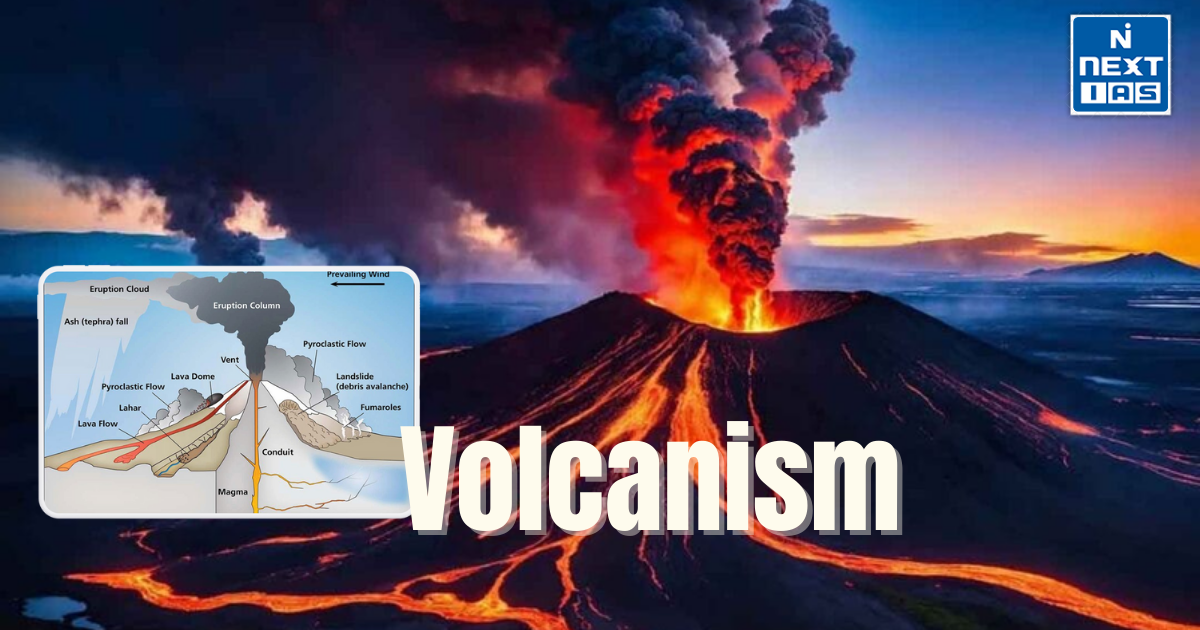
The Indian Ocean Dipole (IOD) is a climatic phenomenon characterised by fluctuations in sea surface temperatures and atmospheric conditions between the western and eastern Indian Ocean. Its significance lies in its ability to influence weather patterns and monsoon dynamics across the Indian Ocean region, impacting rainfall distribution and climate variability. This article aims to study in detail the features, effects, and implications of the Indian Ocean Dipole on the Indian monsoon and regional climate.
What is Indian Ocean Dipole?
- The Indian Ocean Dipole (IOD) is a climate phenomenon characterised by fluctuations in sea surface temperatures and atmospheric conditions in the Indian Ocean.
- It consists of a see-saw pattern of sea surface temperature anomalies between the western and eastern parts of the Indian Ocean.
Features of Indian Ocean Dipole (IOD)
The salient features of the Indian Ocean Dipole are:
- Sea Surface Temperature Differences – The IOD is characterised by temperature differences between two regions in the Indian Ocean: a warm pool in the western Indian Ocean (near the Arabian Sea) and a cooler pool in the eastern Indian Ocean (near Indonesia).
- Phase Variations – The IOD has two phases: Positive IOD and Negative IOD.
- Positive IOD is associated with warmer sea surface temperatures in the western Indian Ocean and cooler temperatures in the eastern Indian Ocean.
- Negative IOD is characterised by warmer temperatures in the east of the Indian Ocean and cooler temperatures in the western Indian Ocean.
- Seasonal Development – The IOD usually develops from April to May and peaks in October. Its development and phase can influence the timing and strength of the monsoon season.
- Atmospheric Component – The atmospheric component of the IOD is known as the Equatorial Indian Ocean Oscillation (EQUINOO), which involves oscillations in warm water and atmospheric pressure between the Bay of Bengal and the Arabian Sea.
- Historical and Recent Observations – The IOD was identified in 1999 as a significant factor influencing the Indian monsoon. It has been observed to interact with other climatic phenomena like ENSO, affecting the overall climate patterns in the Indian Ocean region.
Influence of Indian Ocean Dipole on Indian Monsoon
- Although ENSO was statistically effective in explaining several past droughts in India, in recent decades, the ENSO-Monsoon relationship seemed to weaken in the Indian subcontinent.
- For example, in 1997, strong ENSO failed to cause drought in India.
- However, it was later discovered that just like ENSO was an event in the Pacific Ocean, a similar seesaw ocean-atmosphere system was also at play in the Indian Ocean.
- It was found in 1999 and named the Indian Ocean Dipole (IOD).
- Similar to ENSO, the atmospheric component of the IOD was named the Equatorial Indian Ocean Oscillation [EQUINOO]. This oscillation of warm water and atmospheric pressure occurs between the Bay of Bengal and the Arabian Sea.
- Indian Ocean Dipole (IOD) develops in the equatorial region of the Indian Ocean from April to May, peaking in October.
- It is defined by the differences in sea surface temperature between two areas (or poles, hence a dipole) – a western pole in the Arabian Sea (western Indian Ocean) and an eastern pole in the eastern Indian Ocean south of Indonesia.
Effects of Indian Ocean Dipole (IOD)
Positive Indian Ocean Dipole (IOD)
- A positive IOD means winds over the Indian Ocean blow from east to west (from the Bay of Bengal towards the Arabian Sea).
- This results in the Arabian Sea (the western Indian Ocean near the African Coast) being much warmer and the eastern Indian Ocean around Indonesia becoming colder and dry.
- Positive IOD (Arabian Sea warmer than the Bay of Bengal) results in more cyclones than usual in the Arabian Sea.
- While in a negative dipole year (negative IOD), the reverse happens, making Indonesia much warmer and rainier.
Negative Indian Ocean Dipole (IOD)
- A negative IOD results in stronger-than-usual cyclogenesis (Formation of Tropical Cyclones) in the Bay of Bengal. Cyclonogenesis, i.e., the formation of cyclones in the Arabian Sea, is suppressed.
- It was demonstrated that a positive IOD index often negated the effect of ENSO, resulting in increased Monsoon rains in several ENSO years, such as 1983, 1994, and 1997.
- Further, it was shown that the two poles of the IOD—the eastern pole (around Indonesia) and the western pole (off the African coast)—independently and cumulatively affected the quantity of rain for the Monsoon in the Indian subcontinent.
Conclusion
The Indian Ocean Dipole (IOD) is a vital factor in understanding the variability of monsoon patterns in India. By altering sea surface temperatures and atmospheric conditions between the western and eastern Indian Ocean, the IOD influences the intensity and distribution of rainfall across the region. Its phases—positive and negative—can significantly impact weather events, from cyclogenesis to monsoon strength. Ongoing research into the IOD and its interactions with other climatic phenomena like ENSO is essential for improving weather predictions and managing the effects of monsoon variability on agriculture, water resources, and disaster preparedness.
Frequently Asked Questions (FAQs)
What is Indian Ocean Dipole?
The Indian Ocean Dipole (IOD) is a climate phenomenon characterised by differences in sea surface temperatures between the western and eastern Indian Ocean.
What is the dipole of the Indian Ocean?
The dipole of the Indian Ocean, also known as the Indian Ocean Dipole (IOD), refers to the difference in sea surface temperatures between its western and eastern parts.






